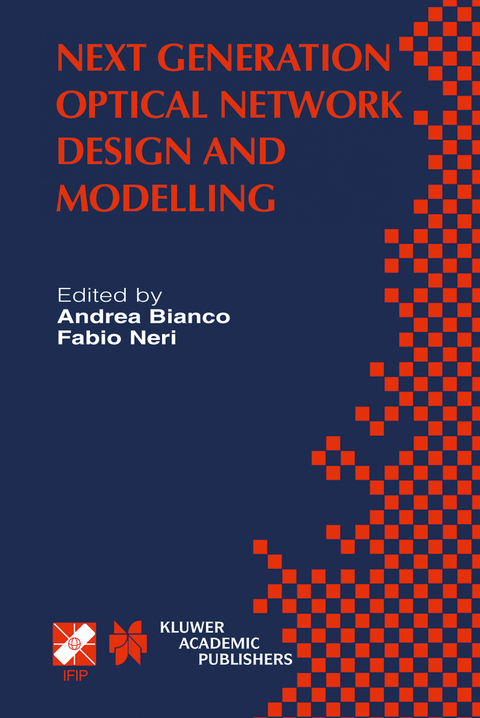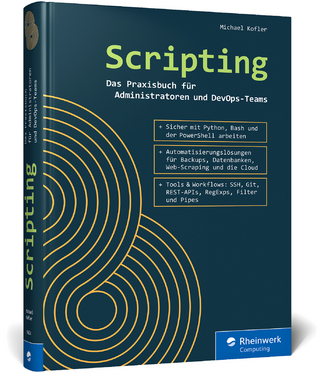
Next Generation Optical Network Design and Modelling
Springer-Verlag New York Inc.
978-1-4020-7371-7 (ISBN)
Optical networks are leaving the labs and becoming a reality. Despite the current crisis of the telecom industry, our everyday life increasingly depends on communication networks for information exchange, medicine, education, data transfer, commerce, and many other endeavours. High capacity links are required by the large futemet traffic demand, and optical networks remain one of the most promising technologies for meeting these needs. WDM systems are today widely deployed, thanks to low-cost at extreme data rates and high reliability of optical components, such as optical amplifiers and fixed/tunable filters and transceivers. Access and metropolitan area networks are increasingly based on optical technologies to overcome the electronic bottleneck at the network edge. Traditional multi-layer architectures, such as the widely deployed IP/ATM/SDH protocol stack, are increasingly based on WDM transport; further efforts are sought to move at the optical layer more of the functionalities available today in higher protocol layers. New components and subsystems for very high speed optical networks offer new design opportunities to network operators and designers. The trends towards dynamically configurable all-optical network infrastructures open up a wide range of new network engineering and design choices, which must face issues such as interoperability and unified control and management.
MAC Protocols.- A QoS-Sensitive MAC for Slotted WDM Metropolitan Rings.- An Analytical Model for a Slotted WDM Metro Ring with A-Posteriori Access.- A Preemptable Slotted Access Protocol to Transport Variable Size Packets in All-Optical Ring Lans/Mans.- Comparison of Single-Hop and Multihop AWG Based WDM Networks.- Burst Switching.- Segmented Burst Switching: Enhancement of Optical Burst Switching to Decrease Loss Rate and Support Quality of Service.- Provision of End-to-End Delay Guarantees in Wavelength-Routed Optical Burst-Switched Networks.- QoS Performance of WR-OBS Network Architecture with Request Scheduling.- Dimensioning of FDL Buffers for Optical Burst Switching Nodes.- Italian Projects on Optical Networks.- Optical Packet Switching of IP Traffic.- Dynamic DWDM Exploitation in Connection-Oriented Optical Packet Switches.- Variable-Size Packets in Slotted WDM Ring Networks.- Ringo: A Demonstrator of WDM Optical Packet Network on a Ring Topology.- A Wavelength Recognizing Switching Architecture for Omega Interconnection Networks.- Switch Architecture.- On the Performance of Optical Flow Routers Employing Wavelength Conversion.- Prioritized Buffer Management in Photonic Packet Switches for Diffserv Assured Forwarding.- Assessment of Packet Loss for an Optical Packet Router with Recirculating Buffer.- Capability of Optical Code-Based MPLS (OC-MPLS).- Protection and Restoration.- Design of Static WDM Mesh Networks with Dedicated Path-Protection.- Zrestore: A Link Restoration Scheme with High Aggregation and No Reservation.- Protection and Restoration Strategies in WDM Mesh Networks.- Dynamic Routing with Partial Information in Mesh-Restorable Optical Networks.- Virtual Topology Design.- A Study on the Efficacy of Regular Virtual Topology Design Heuristics for Optical Packet Switching.- A Design Method for Logical Topologies with Consideration of Wavebands.- Dynamic Establishment of All-Optical Connections in Wavelength-Routed Optical Networks Using Genetic Algorithms.- Wavelength Routed Networks.- Capacity Expansion of Fiber Optic Infrastructure Networks Using Wavelength Division Multiplexing Systems.- Performance Analysis of WDM Optical Networks with Wavelength Usage Constraint.- A Multistart Randomized Greedy Algorithm for Traffic Grooming on Mesh Logical Topologies.- Physical and Transmission.- Combined ASK/FSK and as ASK/DPSK Modulation Formats for Optically Labeled Signals.- Some New Concepts for All-Optical 2R Regeneration Using InP-Based Photonic Integrated Circuits.- On the Impact of Electronic Regeneration on Dynamic Wavelength Routing in Selectively Transparent or Opaque WDM Networks.- Impact of Polarization Mode Dispersion in Multi-Hop Multi-Rate WDM Rings.- Modelling of a Deterministic Emulator to Accurately Reproduce the Real Fiber Affected by PMD up to Third Order.
| Reihe/Serie | IFIP International Federation for Information Processing ; 114 |
|---|---|
| Zusatzinfo | XI, 496 p. |
| Verlagsort | New York, NY |
| Sprache | englisch |
| Maße | 155 x 235 mm |
| Themenwelt | Mathematik / Informatik ► Informatik ► Netzwerke |
| Naturwissenschaften ► Physik / Astronomie ► Optik | |
| Technik ► Elektrotechnik / Energietechnik | |
| ISBN-10 | 1-4020-7371-2 / 1402073712 |
| ISBN-13 | 978-1-4020-7371-7 / 9781402073717 |
| Zustand | Neuware |
| Haben Sie eine Frage zum Produkt? |
aus dem Bereich


